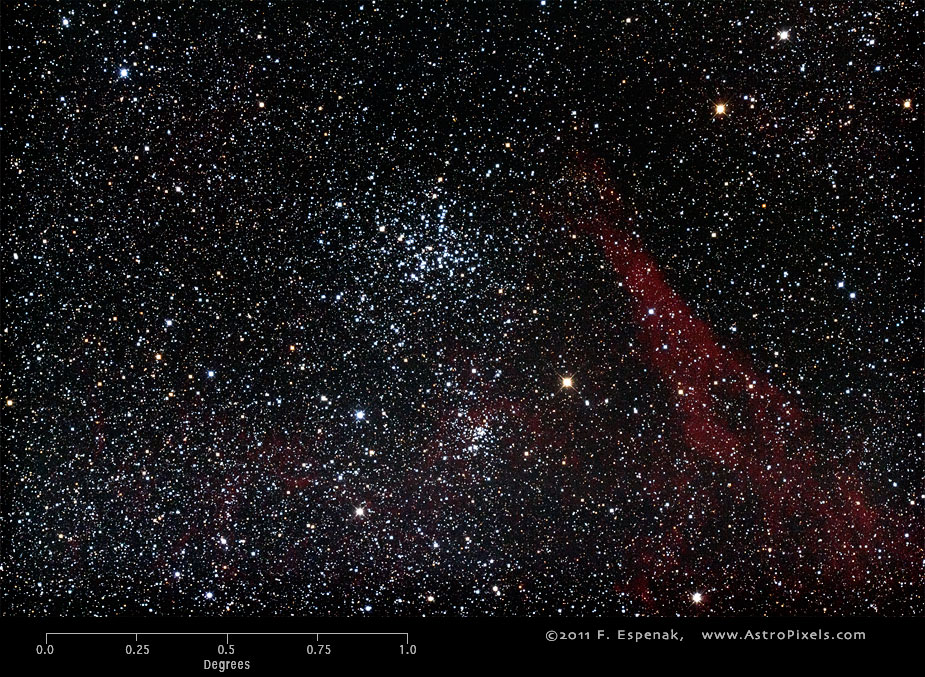
M38
Messier 38 or M38 (also designated NGC 1912) is an open cluster in the constellation Auriga. It has an apparent visual magnitude of 7.4 and its angular diameter is 21 arc-minutes. M38 lies at an estimated distance of 4200 light years. The Equinox 2000 coordinates are RA= 5h 28.7m, Dec= +35° 50´ which makes M38 best seen during the winter. The Messier Winter Star Chart shows the position of all Messier objects visible during that season.
The image above shows the uncropped view of M38 through the Takahashi E-180 Astrograph (North is up). A 2x enlargement of this image appears to the right.About 30 arc-minutes south of M38 lies the smaller open cluster NGC 1907. A faint emision nebula (IC 419) is locaed 3/4 degree to the west.
In spite of its inclusion in the Messier Catalog, this open cluster was actually discovered by G. B. Hodierna in 1654. Along with M36 and M37, it forms a trio of open clusters in Auriga. According to Kharchenko et al. (2005), the distance of M38 is 3480 light years and its diameter is 15 light years. It contains over 100 stars and its estimated age is 150-250 million years.
For more information, see the Messier Catalog as well as specific entries for M38 in Wikipedia and SEDS.
Messier's Description of M38
September 25, 1764
`Cluster of small stars in Auriga, near the star Sigma, little distant from the two preceding clusters [M36 and M37]; this one is of square shape and contains no nebulosity, if one takes care to examine it with a good telescope. Its extension is about 15' of arc.' (diam. 15')
Technical Details
- Object: M38
- Other Names: NGC 1912
- Object Type: open cluster
- Object Data: Apparent Magnitude = 7.4, Angular Size = 21 arc-minutes
- Object Position (Equinox 2000): RA= 5h 28.7m, Dec= +35° 50´, Constellation = Auriga
- Date/Time: 2011 Mar 27 at 02:59 UTC
- Location: Bifrost Astronomical Observatory, Portal, AZ
- Mount: Astro-Physics 1200GTO
- Telescope: Takahashi Epsilon 180 Hyperbolic Astrograph
- Camera: Canon EOS 550D (Rebel T2i) (modified with a Baader UV/IR filter)
- Field of View: 1.70° x 2.56° at 1.7 arc-sec/pixel (web version: 10.0 arc-sec/pixel)
- Exposure: 2 x 300s, f/2.8, ISO 800
- File Name: M38-01w.jpg
- Processing (Adobe Camera Raw): Graduated Filter, Vignetting Correction, Noise Reduction, White Balance, Curves
- Processing (Photoshop CS5): Average Images, Curves, Noise Reduction
- Original Image Size: 3454 × 5179 pixels (17.9 MP); 11.5" x 17.3" @ 300 dpi
- Rights: Copyright 2011 by Fred Espenak. All Rights Reserved. See: Image Licensing.
